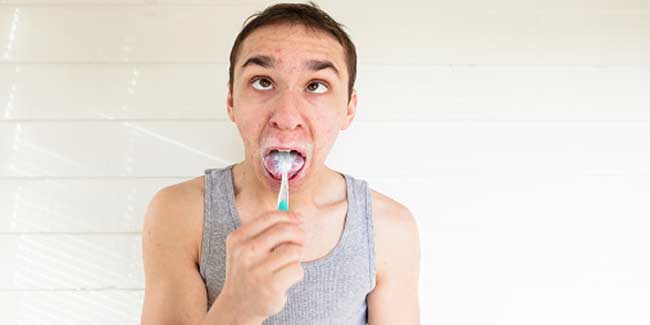
Do you know your toothbrush contains germs? Well, according to researchers, there can be as many as 1.2 million bacteria on a single toothbrush. Also, a New York State Dental Journal found that 70% of used toothbrushes are contaminated with these bacteria.
Table of Content:-

Germs found on toothbrush
Your toothbrush is home to more than 100 million bacteria including flu virus, staph bacteria, E. coli, yeast fungus and strep virus, according to researchers at the University of Manchester in England. And the University of Alabama at Birmingham found that faecal germs were on your toothbrushes too.
Grossed out already? Don’t freak out yet. Your mouth is also full of bacteria and your toothbrush probably won't make you sick, but there are ways to keep it clean so you stay healthy.
Mouthful of bacteria
Hundreds of microorganisms live in our mouths every day. Even plaque – the stuff you are trying to brush off your teeth – is a type of bacteria. None of this is cause for concern unless there is an unhealthy balance of bacteria in the mouth.
How brushing your teeth hurts
Brushing your teeth, particularly with an electric toothbrush, can actually push germs under your gums, says R. Thomas Glass, DDS, PhD, professor of dentistry and pathology at Oklahoma State University Center for Health Sciences.
Your mouth already consists of most of these germs. And that’s why you probably won't get sick from them. But, if others use your toothbrush (or you use someone else's) germs can be spread.
However, you should worry about recurring illness. When your resistance is low, that's when this becomes clinically important. In essence, you are re-infecting yourself.
Could your toothbrush be making you sick?
There are scarce chances that you’ll get an infection from your own toothbrush. Even if your brush is covered in bacteria, your immune system can usually take care of any bacterial invaders. However, caring for your toothbrush properly and keeping it clean is still essential.
The following points discuss some ways to care for and store your toothbrush properly to minimize the chance of illness.
- Wash your hands before and after brushing.
- Don't Brush Where You Flush. Every time you flush, bacteria are released into the air – and you don't want that bacteria to get on your toothbrush.
- Change your toothbrush every three months or whenever you have the flu or a cold. You should also change when the bristles become worn.
- Alternate between two brushes to make sure you use a completely dry brush.
- Toothbrush holders are the third-most germy household items (behind dish sponges and kitchen sinks). Remember to clean your toothbrush holder regularly to remove germs.

- Do not share brushes and avoid storing toothbrushes together.
- Rinse your toothbrush thoroughly after every brush with hot water. For a more effective rinse, submerge your brush in hydrogen peroxide or alcohol-based mouthwash.
- Let your brush air-dry before putting a cap on the head or storing it away.
- Use a different tube of toothpaste if you or someone else in your family is sick.
There are products available that claim to sanitize your toothbrush. The American Dental Association (ADA) states soaking your toothbrush in an antibacterial mouth rinse after use may reduce q number of bacteria on your toothbrush. Just make sure you do not try to sterilize your toothbrush in a microwave or dishwasher. According to the ADA, most toothbrushes are not made to withstand these conditions and doing so might damage the brush and reduce its effectiveness.
Image Source: Getty
How we keep this article up to date:
We work with experts and keep a close eye on the latest in health and wellness. Whenever there is a new research or helpful information, we update our articles with accurate and useful advice.
Current Version
